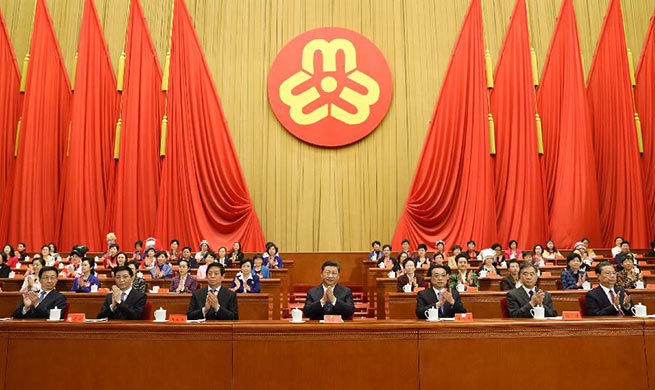BEIJING, Oct. 31 (Xinhua) -- China's manufacturing sector continued to expand at a slower but more sustainable pace in October, despite external uncertainties.
The country's manufacturing purchasing managers' index (PMI) came in at 50.2 in October, narrowing from 50.8 in September, the National Bureau of Statistics (NBS) said Wednesday.
A reading above 50 indicates expansion, while a reading below reflects contraction.
The gauge of factory activity has remained in the expansionary territory for 27 months in a row.
"The manufacturing sector, in general, continued to expand at a slower pace," said NBS senior statistician Zhao Qinghe. "The fundamentals of the manufacturing sector remain stable."
Zhao said the manufacturing supply and demand in October experienced fluctuations due to factors including the National Day holiday and a complicated external environment.
Sub-index for production edged down from 53 in September to 52 in October, while the sub-index for new orders dipped from 52 in September to 50.8 in October.
Wednesday's data also showed that China's non-manufacturing sector held steady in October, with the PMI for the sector standing at 53.9 in October, down from 54.9 in September.
The service sector, which accounts for more than half of the country's GDP, maintained stable growth, with the sub-index measuring business activity in the industry standing at 52.1 in October, down from 53.4 in September.
Rapid expansion was seen in industries including postal service, Internet software and telecommunications, where the readings were all above 59, the NBS said.
"The non-manufacturing PMI remains well above the manufacturing PMI, suggesting China’s primary growth driver continues to shift toward the tertiary sector," Asian investment bank Nomura said in a research note.
The PMI readings reinforced a message revealed by a slew of other indicators that the Chinese economy is resilient against external headwinds with sound fundamentals.
The number of newly-created jobs in urban areas had exceeded 11 million in the first three quarters, meeting the government's annual target three months ahead of schedule.
The gross domestic product (GDP) expanded 6.7 percent year on year in the
first three quarters of 2018 to about 65.09 trillion yuan (about 9.38 trillion U.S. dollars).
Among the 25 provincial-level regions of China that have so far released economic data for the first three quarters of 2018, the GDP of 15 regions ran faster than the country's national level of 6.7 percent.
Guangdong presented the largest GDP of 7.06 trillion yuan, and Yunnan achieved the highest GDP growth rate of 9.1 percent.
The GDP of Yunnan, Guizhou, Jiangxi, Shaanxi, Fujian, Anhui and Sichuan grew most rapidly in the first three quarters, with all of them achieving a growth rate of over 8 percent.
Morgan Stanley economist Robin Xing said the investment bank maintained its forecast on China's GDP growth in 2018 at 6.6 percent, stressing the role of consumption in sustaining growth. "Third- and fourth-tier cities will continue to see faster consumption growth than metropolises."
China has been in a transition from an investment and export-fueled development growth model to one that draws strength from innovation, consumption and the service sector.
The service sector ticked up 7.7 percent year on year in the January-September period, picking up from a 7.6-percent increase in the first half and outpacing 3.4 percent in primary industry and 5.8 percent in secondary industry.
Consumption, which has played a prominent role in driving growth, contributed 78 percent of the GDP in the first three quarters.
To boost long-term development, China has announced a host of pro-growth measures, including enhancing financial support for small businesses, cutting administrative red tape and further reducing taxes and fees to offset the strain from external uncertainties.
When answering questions from domestic media about economic and financial hot issues, Chinese Vice Premier Liu He stressed that the Chinese government will create an equal environment, intensify the rule of law, strengthen property rights and intellectual property protection, stick to the basic economic system and deepen reform and opening up.
"We have no reason not to have full confidence in the broad prospect of China's economic development," said Liu.

















